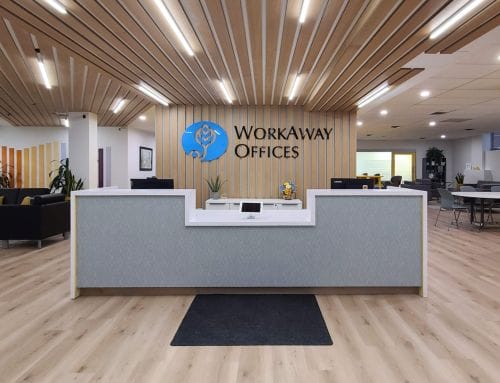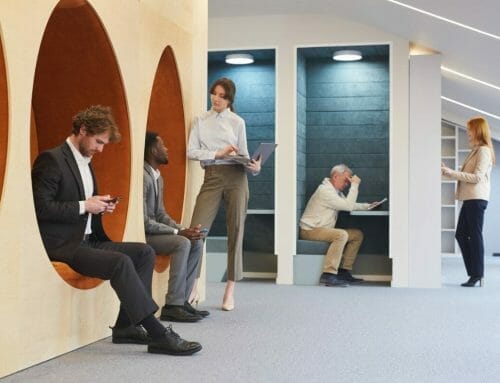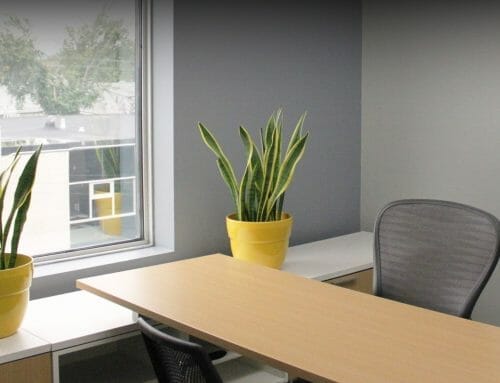A Case for Co-Working and Shared Offices
The Covid-19 pandemic is a game changer for every business around the world, and no business will be spared from the repercussions. Obligated to ensure the safety of their staff, many businesses have had to arrange for employees to work through their homes, and sadly in many cases, not work at all.
For many, it’s been very challenging having to set up a variety of practical, procedural and technological resources in employee’s homes, while struggling to operate their business operations as efficiently as possible. Has working at home been a productive alternative to the traditional office environment? In some cases perhaps, but that remains to be seen.
My own research, albeit informal, has indicated that over the past several months, company owners have not been as productive as they used to be. Many have slowed down or had to shut down temporarily. We’ve all had to work from home, organize countless video-calls and spend the majority of our working day on the phone. It now seems like a luxury to be able to just drop in and speak with staff to resolve matters quickly. If key executives are not as productive as possible, low productivity could permeate throughout the entire organization. Getting back to our offices will mean increased productivity.
The thought of returning to a work environment is understandably mixed among employees and the rank and file. Some say that they love working from home and believe that they’re more productive. Others have been struggling, as they’ve tried to juggle constant disruptions and over-lapping responsibilities, such as supervising children that are stuck at home.
Most homes are not designed as full-time work centres. The dining room table has become a semi-permanent desk for many workers, and bedrooms have become a common “quiet room” for video conference calls. Of course, the problem is exacerbated if more than one person is working at home, which is often the case.
Social isolation is another common complaint, and many countries are now witnessing higher levels of mental health issues as a result. A recent working paper from the National Bureau of Economic Research surveyed 3.1 million people in 16 large metropolitan areas in North America, Europe and the Middle East. They found that the current ‘pandemic lockdown workday’ is, on average, 48.5 minutes longer than usual. The working paper also reports that people are involved in 13% more meetings and 40% more daily emails. The data also revealed odd work hours, which is attributing to blurred boundaries between work, home and child-care demands. Will mental health concerns escalate after the summer weather ends and we move into colder temperatures?
Is the Traditional Office Dead?
I highly doubt it! Socializing, not social media, is an essential human need. Our mental health relies on it. Social engagement is associated with a stronger immune system, especially for older adults. Interacting with others boosts feelings of well-being and decreases feelings of loneliness and depression.
The New Normal
Upon returning to our traditional offices, we will all have expectations that our business managers and landlords will provide increased levels of office sanitizing and they will implement plans to allow for social distancing, as well as work hour flexibility. These changes will become the new cornerstones of what all future office spaces will require.
Flexibility
For many practical reasons, employment flexibility will be a key consideration that managers will have to consider going forward. By flexibility, I mean that employers may have to consider modified office and home schedules for their employees due to variety of reasons, such as:
- Limited day-care and school hours for children. Depending how each community allows for the opening of its day-care and school boards, parents could be dealing with limited space or alternating home/in-school student schedules.
- Working in a high-rise office building that has mandated schedules for elevator usage on a social distancing basis could mean that not everyone can come to work on the same day, or at the same time.
- Subways, buses and other forms of mass transportation will have increased levels of ridership and social distancing may limit the amount of people that can be transported at one time
- Social distancing in an office environment may be difficult. Prior to Covid-19, the average square footage of space per employee ranged from 125 to 175 square feet. The average was even lower for technology based companies. Companies will have to re-arrange employee workspace sizes and configurations. Amenities such as kitchens, lounges and bathrooms may require a re-do or implementation of a schedule system.
Co-Working and Shared Office Space
In some cases, employers and small businesses may want to consider the flexibility of using shared office space for temporary time periods, at least. If you can’t or don’t want to have your staff working in a downtown high-rise office tower, but you want them working together in one location, you should consider the benefits of flexible office spaces available at shared office space locations.. Desks and offices can often be rented on a daily, weekly or monthly basis, with no long-term lease commitments. If you need more or less space, you’ll have the flexibility to make changes to suit your needs.
What’s great is that in most cases, everything is included. You get tastefully furnished offices, WiFi, access to printers, professionally furnished meeting rooms, kitchens, security, office cleaning, parking and free coffee & tea. As well, I would venture to say that all shared office providers have enhanced their office cleaning and sanitizing procedures.
Many co-working and shared office spaces are located on either walk-up or ground floor levels, so elevators can be avoided. This could be an ideal solution for teams of up to 10 people or more.
Check out WorkAway Offices
We already have all of the solutions covered, and we’re ready and able to move you in. WorkAway Offices is a thriving co-working and shared office facility in central Ottawa, Ontario. At WorkAway Offices, you’ll have 24/7 access to beautiful, professionally furnished and functional offices, meeting rooms and shares spaces without any long-term obligations. Our private offices and suites can accommodate up to 10 people comfortably and safely. Each office is lockable, secure with increased levels of office cleaning and sanitization.
Our Members love us and they love working at WorkAway Offices. See for yourself. Check our website www.workawayoffices.com and call us to schedule a tour of our beautifully furnished workspaces.
A Case for Co-Working and Shared Offices
The Covid-19 pandemic is a game changer for every business around the world, and no business will be spared from the repercussions. Obligated to ensure the safety of their staff, many businesses have had to arrange for employees to work through their homes, and sadly in many cases, not work at all.
For many, it’s been very challenging having to set up a variety of practical, procedural and technological resources in employee’s homes, while struggling to operate their business operations as efficiently as possible. Has working at home been a productive alternative to the traditional office environment? In some cases perhaps, but that remains to be seen.
My own research, albeit informal, has indicated that over the past several months, company owners have not been as productive as they used to be. Many have slowed down or had to shut down temporarily. We’ve all had to work from home, organize countless video-calls and spend the majority of our working day on the phone. It now seems like a luxury to be able to just drop in and speak with staff to resolve matters quickly. If key executives are not as productive as possible, low productivity could permeate throughout the entire organization. Getting back to our offices will mean increased productivity.
The thought of returning to a work environment is understandably mixed among employees and the rank and file. Some say that they love working from home and believe that they’re more productive. Others have been struggling, as they’ve tried to juggle constant disruptions and over-lapping responsibilities, such as supervising children that are stuck at home.
Most homes are not designed as full-time work centres. The dining room table has become a semi-permanent desk for many workers, and bedrooms have become a common “quiet room” for video conference calls. Of course, the problem is exacerbated if more than one person is working at home, which is often the case.
Social isolation is another common complaint, and many countries are now witnessing higher levels of mental health issues as a result. A recent working paper from the National Bureau of Economic Research surveyed 3.1 million people in 16 large metropolitan areas in North America, Europe and the Middle East. They found that the current ‘pandemic lockdown workday’ is, on average, 48.5 minutes longer than usual. The working paper also reports that people are involved in 13% more meetings and 40% more daily emails. The data also revealed odd work hours, which is attributing to blurred boundaries between work, home and child-care demands. Will mental health concerns escalate after the summer weather ends and we move into colder temperatures?
Is the Traditional Office Dead?
I highly doubt it! Socializing, not social media, is an essential human need. Our mental health relies on it. Social engagement is associated with a stronger immune system, especially for older adults. Interacting with others boosts feelings of well-being and decreases feelings of loneliness and depression.
The New Normal
Upon returning to our traditional offices, we will all have expectations that our business managers and landlords will provide increased levels of office sanitizing and they will implement plans to allow for social distancing, as well as work hour flexibility. These changes will become the new cornerstones of what all future office spaces will require.
Flexibility
For many practical reasons, employment flexibility will be a key consideration that managers will have to consider going forward. By flexibility, I mean that employers may have to consider modified office and home schedules for their employees due to variety of reasons, such as:
- Limited day-care and school hours for children. Depending how each community allows for the opening of its day-care and school boards, parents could be dealing with limited space or alternating home/in-school student schedules.
- Working in a high-rise office building that has mandated schedules for elevator usage on a social distancing basis could mean that not everyone can come to work on the same day, or at the same time.
- Subways, buses and other forms of mass transportation will have increased levels of ridership and social distancing may limit the amount of people that can be transported at one time
- Social distancing in an office environment may be difficult. Prior to Covid-19, the average square footage of space per employee ranged from 125 to 175 square feet. The average was even lower for technology based companies. Companies will have to re-arrange employee workspace sizes and configurations. Amenities such as kitchens, lounges and bathrooms may require a re-do or implementation of a schedule system.
Co-Working and Shared Office Space
In some cases, employers and small businesses may want to consider the flexibility of using shared office space for temporary time periods, at least. If you can’t or don’t want to have your staff working in a downtown high-rise office tower, but you want them working together in one location, you should consider the benefits of flexible office spaces available at shared office space locations.. Desks and offices can often be rented on a daily, weekly or monthly basis, with no long-term lease commitments. If you need more or less space, you’ll have the flexibility to make changes to suit your needs.
What’s great is that in most cases, everything is included. You get tastefully furnished offices, WiFi, access to printers, professionally furnished meeting rooms, kitchens, security, office cleaning, parking and free coffee & tea. As well, I would venture to say that all shared office providers have enhanced their office cleaning and sanitizing procedures.
Many co-working and shared office spaces are located on either walk-up or ground floor levels, so elevators can be avoided. This could be an ideal solution for teams of up to 10 people or more.
Check out WorkAway Offices
We already have all of the solutions covered, and we’re ready and able to move you in. WorkAway Offices is a thriving co-working and shared office facility in central Ottawa, Ontario. At WorkAway Offices, you’ll have 24/7 access to beautiful, professionally furnished and functional offices, meeting rooms and shares spaces without any long-term obligations. Our private offices and suites can accommodate up to 10 people comfortably and safely. Each office is lockable, secure with increased levels of office cleaning and sanitization.
Our Members love us and they love working at WorkAway Offices. See for yourself. Check our website www.workawayoffices.com and call us to schedule a tour of our beautifully furnished workspaces.



